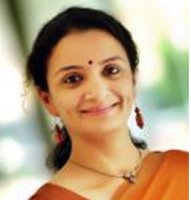
|
 |

|
 |
Guru Sishya Parampara - Some thoughts - Ramaa Venugopalan e-mail: ramaa17@gmail.com February 6, 2022 A recent calling out of a legendary dancer and the abuse allegations thrown at him are not new to the art space. The recent years have been flooded with several such abuse allegations on the teachers of art and art institutions. That leads to the obvious mudslinging on the Guru-Sishya Parampara of Indic Arts. I will restrict this post to dance in general. The general viewpoint is to say that this Parampara has failed and to dismiss it as irrelevant. While it may seem to be the easiest thing to do, one must examine what this Parampara was, is and will be. Historically, the study of art was within a specific group of specialised people. Within that group there was hierarchy, there were roles and power structure. That scene has changed and evolved over the centuries. What remains of the Parampara then? Art was passed on by the teacher to the student and it continues to be imparted this way. The student-teacher relationship plays a huge role in the evolution of the art and its way forward. Until the recent past, the Vadiyars (not Guru) who were teachers of the art had disciples whom they taught based on the individual capabilities of the student. Art then also got institutionalised. Hundreds of students across varied geographies and cultural backgrounds are under a stream of teachers, who teach them the skills. How then, in such a vast scenario, does one develop a unique bond with the teacher? Is this a Parampara or is it a modern institution with modern protocols? Let us simplify this scenario. A teacher of art has a few students, has his/her own child/children also learning. How fair and objective is this teacher going to be in imparting the art to each of the students and their own child? What of the power, the supremacy and the general behaviour of the teacher? How are students behaving with the teacher? What is the protocol? What are the unread and unsaid rules and behavioral expectations on both of them? What is the transparency level with which the teacher treats each student including their own offspring? Nepotism? Favouritism? Abuse? Impatience? Neglect? Fair play? Unfair? Why do students find it difficult to stick to one teacher for an extended period of time? Is the teaching space a transparent, safe and positive one? These are just basic questions and observations of how this state of the system is. What it stood for, historically, spiritually and economically is already writ in pages of yesterday. What it is now and how it is abused now is a relevant question and a cause of introspection for both the teachers and the students. Often, art is just opined as spiritual. Spirituality is an extremely difficult path. Those who are on it, know the depth. It's not a blanket rule that all artists are deeply awakened people and all artistic paths are spiritual. It is a great possibility but it is not the premise of that journey. Using spirituality and elevating oneself to a level of a Guru, is questionable. If that were to be true, the dance world would be filled with saints and seers. Not mere performers and artists! While I do have a problem with a blatant accusation on the Parampara and its dismissal, it is time for each student and teacher of the art to introspect to see what this Parampara truly means to them and how they partake in it. A collective impression determines the state of the system in the now. If it is filled with abuse, power play, nepotism and reeks of servitude, then that is what we, the humans of this system, have all brought it down to. The system is never at fault. It was meant for a specific purpose that has withstood the test of time immemorial. And it will continue to flourish through meaningful ways. But what must absolutely not be brushed under the carpet is how abuse, nepotism, power play, favouritism and sleaze are a part of this system. That several students find it difficult to talk about it, several abusers go scot free and sit in glass houses because of their art, is a given. Let us not forget that. Tradition is not a tight box to be taped and put in the attic. It must be questioned and seen for its implicit value and at the same time also questioned for what its users have made it out to be. It is easy always to question tradition. It is a huge responsibility to inhabit that and impart it. As teachers and students of art, we need to be most honest with ourselves and ask ourselves the tough questions on how we have used it and how we have abused it.  Ramaa Venugopalan is a performer and teacher of Bharatanatyam from Bangalore, for a little over three decades. Response * It would be a great service to art, if what it is not is clearly articulated. It is most definitely not a spiritual medium unless one wants it to be. Most skilled dancers does not neccessarily mean good human beings. And spirituality itself has nothing to do with dance...dance can lead to it, but neccessarily a must have to be a good dance. One can be a lousy human being and still be a good dancer. So parampara is long gone...we are left now with basics. Does this skill help me be a better person...if yes, go for it...if not, it's junk anyways, no matter how good one is at it..!! - Roopa (Feb 7, 2022) Post your comments Pl provide your name and email id along with your comment. All appropriate comments posted with name & email id in the blog will also be featured in the site. |